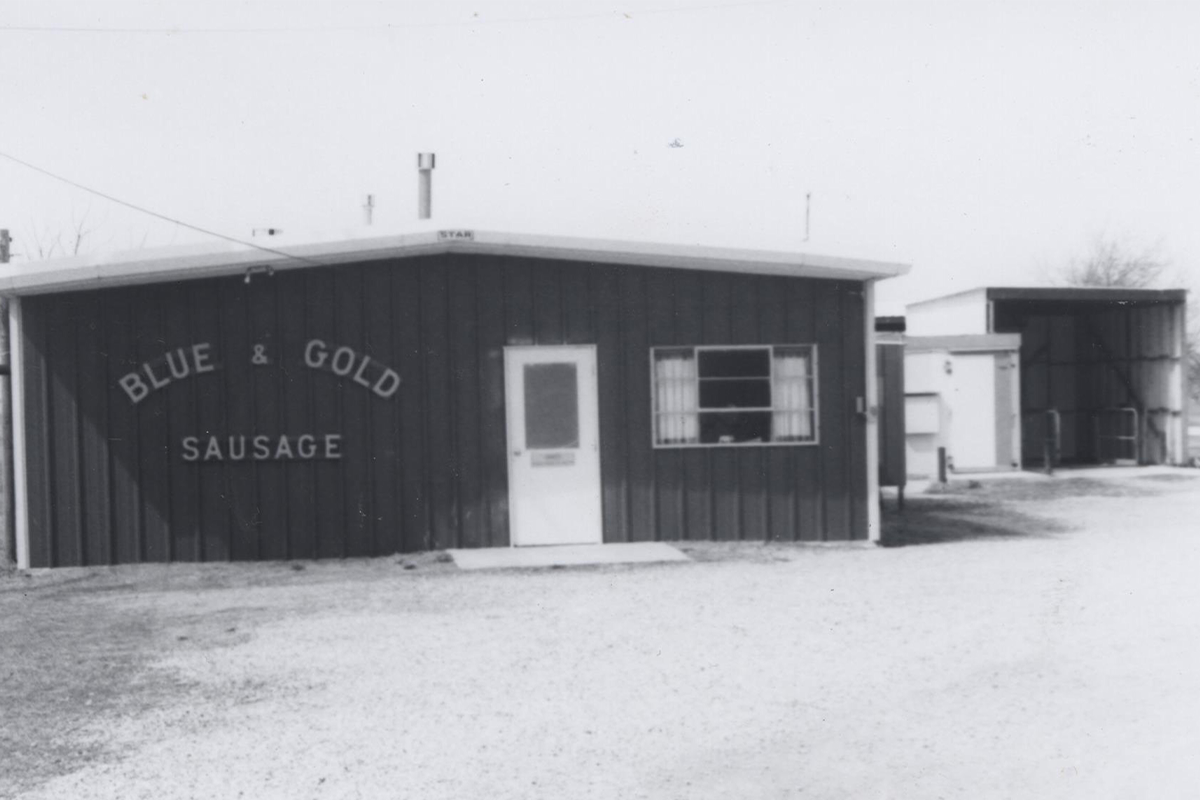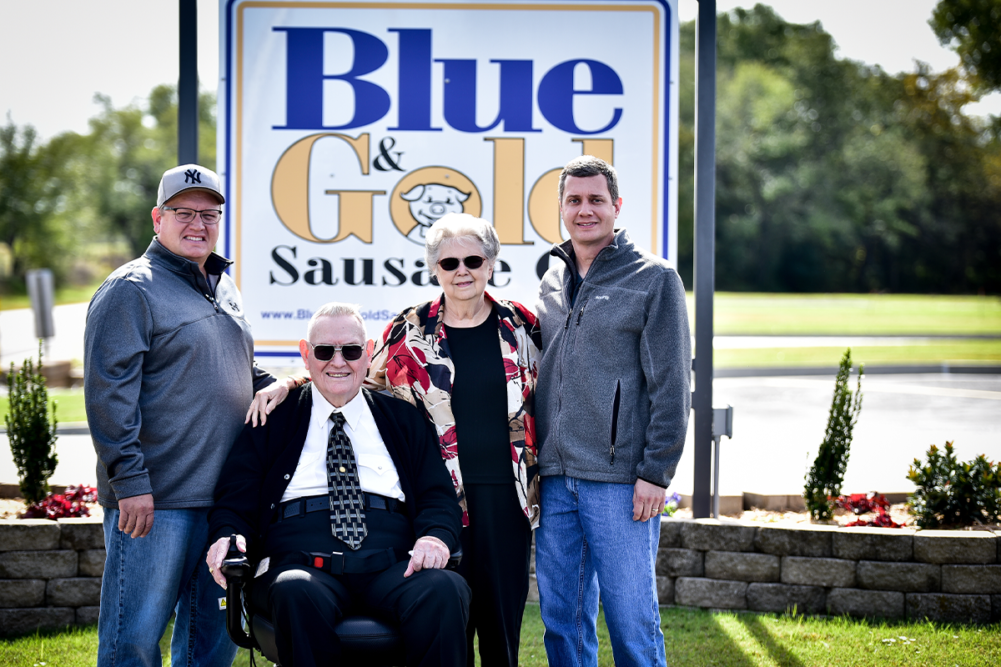On the eastern outskirts of Oklahoma City there is a thriving meat company founded a generation ago with the goal and principle of helping others. Today this rocking enterprise has stayed on track and uses its meat production to help generate more than $6 million a year to benefit agricultural groups and civic organizations.
It’s known as Blue & Gold Sausage Co., located in the suburban community of Jones. The company’s success lies in the simplicity of the mission outlined by founder Don Ramsey and his wife, Willadean.
Don was a teacher who specialized in agriculture education. Every organization from the Future Farmers of America (FFA) to the 4-H Clubs needed projects that could raise money. At the end of the livestock showing season, Don would take the hogs that were shown and have them made into sausage at a local butcher shop. The FFA kids would then take the sausage and sell it as a fundraiser in Jones.
The popularity grew in the community, and Ramsey later decided to make his own sausage. The local butcher gave him the seasoning recipe. He cut down a few trees near his house and built a facility of about 1,200 square feet in size and began producing sausage. To pay homage to his agricultural education roots he even named the new facility Blue & Gold Sausage Co., celebrating the colors of the FFA.
True to its roots
From its 1970 founding until today, the business, now run by Don’s sons Brett, 53, and Greg, 49, has yet to lose sight of its purpose.
“We never forget that we’re about supporting kids’ programs in agriculture first and foremost,” Brett explained. “Our radio ads and on our social media programs let the public know that we are supporters of our youth groups’ fundraisers. We’re constantly amazed that Dad had the foresight to develop a simple program that would do so much for school and community groups.”
Put this concept into perspective: Blue & Gold Sausage Co. makes one product; they have one flavor profile for that product and provide fund-raising programs for approximately 1,100 school and community groups.
Their seasonal business operates from August through April to coincide with the school year. They utilize 15 delivery trucks and vans to send their product to groups within a 250-mile radius.
The focus on simplicity extends further than most would believe, Brett noted.
“We pride ourselves on loyalty to our long-time customers,” he said. “We post on our website (blueandgoldsausage.com) which organizations are currently selling our products. Suppose a non-customer group wants to sell our program meats in an area where we have customer organizations using our program. In that case they must obtain permission from the oldest customer using our program before competing with each other.
“We offer sausage in a 2-1/2 lb roll, or chub, produced in our facility. Our premium, thick-sliced bacon (in 3-lb packages) and chicken tenderloin fritters (in 5-lb packages) are co-packed for us, which gives us three meat items for groups to sell.
“And while we’ve been asked to make our fundraising meats available to retail or chain stores, we back away from that approach so we don’t end up confronting existing customers with outside competition.”
 Source: Blue & Gold Sausage Co.
Source: Blue & Gold Sausage Co.
Notable features
Brett described his responsibilities as inventory management and distribution, while Greg covers the bases on production and regulatory issues, including HACCP.
Don Ramsey died in 2020, but he saw his business expansion happen. The original plant was torn down and replaced with a new 30,000 square-foot facility that can churn out 300,000 lbs of product per week. His wife handled billing and bookkeeping activities at the plant until 2016.
The operation is inspected under the Talmadge-Aiken program, under which state inspectors assure equal-to-federal safety standards are met. This has allowed Blue & Gold to market its program into Arkansas, Texas, Missouri and Kansas, within their 250-mile delivery radius.
Both Brett and Greg are graduates in agricultural economics from Oklahoma State University, and they joke that they shied away from things like basket-weaving courses for their electives to spend time at the meat lab learning more about processing livestock.
While the plant started operating in 1970, the brothers agree that expansion is a never-ending process.
“We learned that when you live on a farm, children are expected to be part of the workforce as soon as they are able to help in any way,” Greg said. “We didn’t have a meat processing background and neither did Dad. He said years into the sausage business that he didn’t know that much about it.”
“When the business was growing and we saw the need to build the new plant in 2014, we did the dumbest thing possible ... we tore the whole plant down and built the new one on the same footprint,” he added. “That meant that we were out of business until the completion of construction. But fortunately, we are a seasonal business and there was no production activity going on with our company from April to the end of that summer. It worked out somehow.”
Brett said the seasonal aspect of Blue & Gold Sausage Co. also got them through the chaos of the COVID-19 pandemic.
“Schools were closed, and it was suggested that people stay home,” he said. “The worst part was over the summer when we were not operating. We had orders for about a quarter million pounds of product that we had to get out. Some of it was a month late, but we found ways to fill those orders.”
Blue & Gold Sausage’s production line’s workforce is another unique quality of the company.
“About 50 employees are retirees or semi-retired and like to keep busy and supplement their incomes,” Brett said. “We continue to offer those seasoned workers 500 hours a year, and many of them being retired military bring unique trade skills that can prove very helpful with our machinery.”
So, it’s clear what simplicity has meant to the success of Blue & Gold Sausage Co. Still, the business requires a bit more finesse than that.
For example, when customers get their orders, they get to participate in an incentive program. Points earned by a customer group result in a $100 gift card. The incentive program tops off at 3,500 points, where the fundraising group receives four $100 gift cards.
On the website you’ll spot another notable feature the company likes to refer to as sharp marketing. With each product available on the fundraising menu are recipes, many of them submitted by those who purchased the products from a fundraising customer group.
The sharp marketers at Blue & Gold picked up on the fact that items like their sausage could be used as a meal centerpiece, as an appetizer, side dish, a chili ingredient and more. Imagine that … new and novel ways to use their product beyond breakfast.




